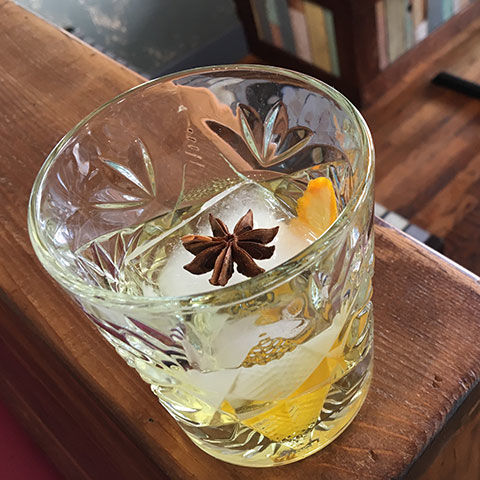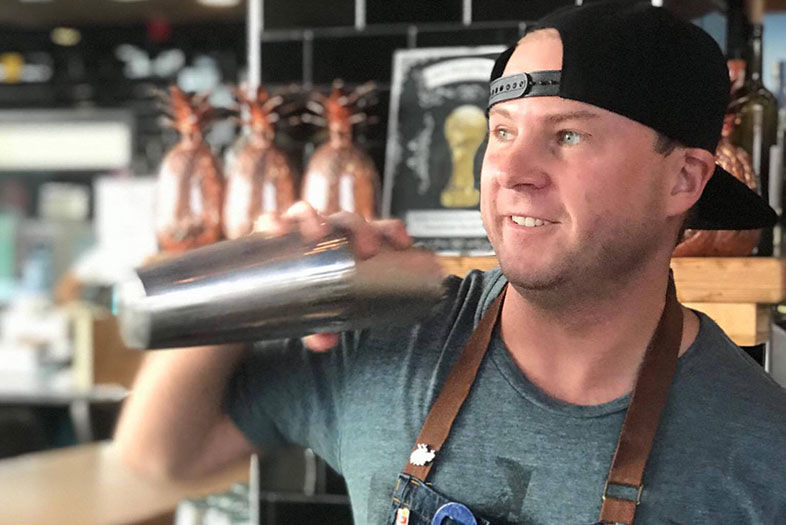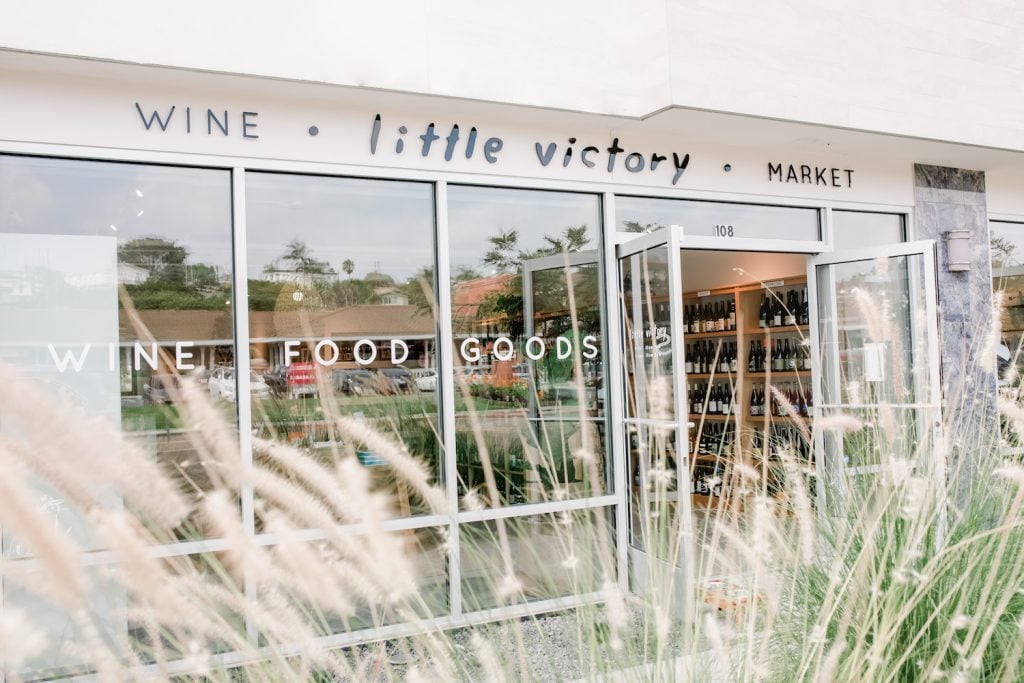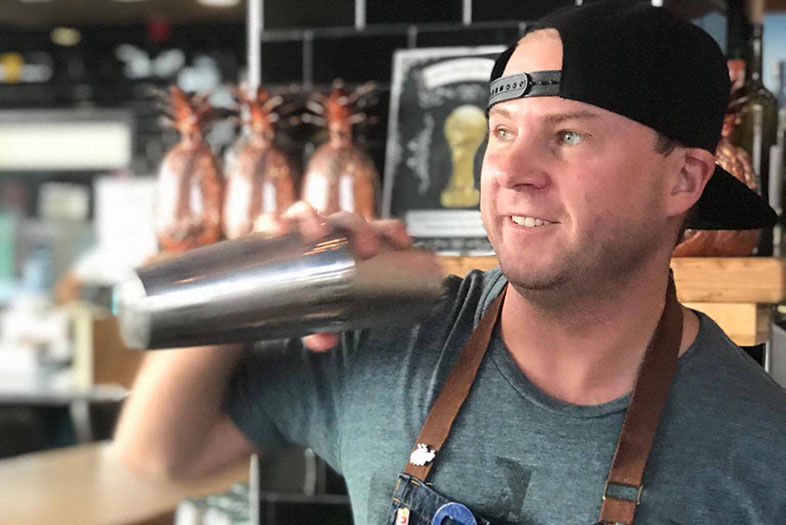I met Mark Broadfoot almost three years ago, when a mutual friend invited us to a cocktail party. Broadfoot, who was working at George’s at the Cove at the time, wowed everyone with a trio of drinks: a mezcal milk punch, a “dirty” horchata, and shots of chorizo-infused mezcal. I’ve followed Broadfoot’s career as he helped open Galaxy Taco in La Jolla and, this year, Tamarindo in North Park, where his Mexican Chocolate Milk Punch has gotten rave reviews from cocktail aficionados — praise that’s well-deserved. While the milk punch should be on any cocktail fan’s must-try list, don’t skip Broadfoot’s version of a Corn N’ Oil, a classic cocktail made with rum and falernum, a syrup used in tiki drinks. Tamarindo’s falernum is made in-house and packed with spice, making the Corn N’ Oil a perfect fall cocktail — it’s, as Broadfoot put it, “dangerously good.”
How’d you end up at Tamarindo?
The chef opening was my best friend, and the GM here is the husband of the former pastry chef at George’s, so we knew each other already… so, they hit me up.
This is a good fit for you because you’re really into agave spirits.
We’ve kept everything pretty restricted. I don’t have a library of tequilas or mezcals that I had at Galaxy, and I think that helps because you’re not as intimidated when you look at the tequila/mezcal list. It’s pretty straightforward with 10 options of each. Highland, lowland, reposado. We don’t have a ton of extra anejos. Our entire agave program is based on bat-friendly tequila.
Based on what?
The conversation that we all need to start having about tequila is — tequila, the blue Weber agave plant, procreates both sexually and asexually. Sexual reproduction is very normal where it’s going to shoot up a stalk, have a flower, pollinate, and then go to seed. That’s how most plants reproduce. Blue Weber agave, and most agaves, are unique in that they produce a genetic clone of themselves at their root structure. Each mother plant makes seven to nine [clones] in its lifetime and for the last 100 years or so, they’ve been using those clones for planting tequila fields rather than letting their plants go to seed. The issue is that you’re using a clone of a clone of a clone and now there’s really broken-up genetics to the point where we don’t know if the agaves are even able to procreate sexually — and they’re very susceptible to diseases that will wipe out an entire tequila production. There is a bat-friendly tequila program that launched last November, because bats are the main pollinators of agave. There are a couple other pollinators, but bats are so important because of the radius that they travel at night. You’re much more likely to have interactions with a different species of agave to build that genetic profile.
Has the menu changed much since you opened?
I’ve done maybe three menu changes. Nothing top to bottom. The House Margarita, I love. It’s a beast. Super-strong. It’s a blend of reposado and blanco tequilas, lime juice, a touch of agave nectar, orange-bourbon bitters we make in-house, and an agricole orange shrub from Martinique in place of orange curaçao.
A rum-based shrub?
It’s not as sweet as a Triple Sec. It’s not a neutral-based spirit — it actually has flavor. I think a Margarita should have that orange flavor profile.
The milk punch that’s currently on the menu, is it the same milk punch Ian Ward wrote about?

Meet the Bartender: Mark Broadfoot
Tamarindo’s Mexican Chocolate Milk Punch | Photo: Kelly Davis
Yeah — it’s a five day process to make. Day one, we peel lemons and oranges and let the peels sit in sugar and macerate and it kind of just leaches out all the oils. The next day, we throw in tequila, sotol, mezcal, Jamaican rum, orange agricole, orange juice, lemon juice, baking spice — cinnamon, star anise — bitters, black tea, Mexican chocolate, dehydrated mangoes, dehydrated chilies.
How long did it take to figure out the right proportions?
I’ve been doing milk punch for awhile, so I kind of have the base structures built in my head. I just make a couple batches and try to make them small and try to have, like, one variable. So, I do a scientific-method kind of thing, where I’m, like, this has more chili, this has less chili, and I do quarter batches, trying to get flavor profiles next to each other, and then a little bit of it’s guess work. And then we built a recipe I’m pretty happy with.
Do people look at it and say, “This isn’t milk punch”?
Oh, yeah. I’ve never had someone say, “This is what I expected.” Every time, it’s “Oh, I ordered the milk punch.” It’s never what people expect, but then you try it and it’s, like, Oh my gosh. The flavors are all there. One of the reasons I really like this cocktail is I can serve it to anyone.
One of the questions I was going to ask is what’s your most approachable cocktail and what’s your most challenging cocktail? Seems like the milk punch fits that bill.
It’s kind of like the same cocktail. I don’t want to be just a cocktail-nerd bar. I think our entire menu’s pretty approachable. Our best seller is the Margarita Tamarindo, which is dehydrated ginger infused into reposado tequila, Liquid Alchemist tamarind syrup, which is just amazing, and lime juice, in a chamoy/tamarind rimmed glass with a little mezcal sidecar. I like to pour it in, but it was a way for me to make an extremely approachable cocktail without the mezcal, or a cocktail-nerd’s cocktail with the mezcal. You get people drinking it both ways, and you get people to try mezcal. We’re using a good mezcal — our well mezcal is Banhez from Oaxaca. It’s not as smokey as something like El Silencio, and I think that makes it a touch more approachable. It’s definitely pretty dry and complex. I really like it.
What’s your favorite cocktail on the menu?
Corn N’ Oil. That’s a classic cocktail — I’m not really sure of its origin. It’s one that’s been thrown around for a long time. It’s generally based around lime juice, Angostura bitters, dark rum, and black strap rum. Our rum base is a blend of Plantation OFTD, which is amazing, but really high ABV; Stolen Smoked, a Caribbean rum that’s cold-smoked and then infused with coffee and vanilla; then Cutwater spiced rum. So, we have all three of those in there. We make falernum in-house. It’s an infusion of clove, allspice, ginger, lime peels, and almonds. A little bit of lime and then a float of a blend of Coruba Dark Jamaican rum and Cruzan blackstrap rum. It’s kind of tiki, but seasonally appropriate. It’s dangerously good.
So, when can folks find you behind the bar?
Usually Tuesday through Saturday nights.

Meet the Bartender: Mark Broadfoot
Mark Broadfoot behind the bar at Tamarindo. | Photo: Kelly Davis














